1. Gomez D, Cameron IC. Prognostic scores for colorectal liver metastasis: clinically important or an academic exercise? HPB (Oxford). 2010; 12:227–38.
2. Fong Y, Fortner J, Sun RL, Brennan MF, Blumgart LH. Clinical score for predicting recurrence after hepatic resection for metastatic colorectal cancer: analysis of 1001 consecutive cases. Ann Surg. 1999; 230:309–18.
3. Ghosh A, Elwell C, Smith M. Review article: cerebral near-infrared spectroscopy in adults: a work in progress. Anesth Analg. 2012; 115:1373–83.
4. Kurth CD, McCann JC, Wu J, Miles L, Loepke AW. Cerebral oxygen saturation-time threshold for hypoxic-ischemic injury in piglets. Anesth Analg. 2009; 108:1268–77.
5. Yao FS, Tseng CC, Ho CY, Levin SK, Illner P. Cerebral oxygen desaturation is associated with early postoperative neuropsychological dysfunction in patients undergoing cardiac surgery. J Cardiothorac Vasc Anesth. 2004; 18:552–8.
6. Murkin JM, Adams SJ, Novick RJ, Quantz M, Bainbridge D, Iglesias I, et al. Monitoring brain oxygen saturation during coronary bypass surgery: a randomized, prospective study. Anesth Analg. 2007; 104:51–8.
7. Slater JP, Guarino T, Stack J, Vinod K, Bustami RT, Brown JM 3rd, et al. Cerebral oxygen desaturation predicts cognitive decline and longer hospital stay after cardiac surgery. Ann Thorac Surg. 2009; 87:36–44.
8. Faulkner JT, Hartley M, Tang A. Using cerebral oximetry to prevent adverse outcomes during cardiac surgery. Perfusion. 2011; 26:79–81.
9. Fischer GW, Lin HM, Krol M, Galati MF, Di Luozzo G, Griepp RB, et al. Noninvasive cerebral oxygenation may predict outcome in patients undergoing aortic arch surgery. J Thorac Cardiovasc Surg. 2011; 141:815–21.
10. Heringlake M, Garbers C, Kabler JH, Anderson I, Heinze H, Schon J, et al. Preoperative cerebral oxygen saturation and clinical outcomes in cardiac surgery. Anesthesiology. 2011; 114:58–69.
11. Schoen J, Meyerrose J, Paarmann H, Heringlake M, Hueppe M, Berger KU. Preoperative regional cerebral oxygen saturation is a predictor of postoperative delirium in on-pump cardiac surgery patients: a prospective observational trial. Crit Care. 2011; 15:R218.
12. Zheng F, Sheinberg R, Yee MS, Ono M, Zheng Y, Hogue CW. Cerebral near-infrared spectroscopy monitoring and neurologic outcomes in adult cardiac surgery patients: a systematic review. Anesth Analg. 2013; 116:663–76.
13. Sun X, Ellis J, Corso PJ, Hill PC, Lowery R, Chen F, et al. Mortality predicted by preinduction cerebral oxygen saturation after cardiac operation. Ann Thorac Surg. 2014; 98:91–6.
14. Momeni M, Meyer S, Docquier MA, Lemaire G, Kahn D, Khalifa C, et al. Predicting postoperative delirium and postoperative cognitive decline with combined intraoperative electroencephalogram monitoring and cerebral near-infrared spectroscopy in patients undergoing cardiac interventions. J Clin Monit Comput. 2019; 33:999–1009.
15. Eertmans W, De Deyne C, Genbrugge C, Marcus B, Bouneb S, Beran M, et al. Association between postoperative delirium and postoperative cerebral oxygen desaturation in older patients after cardiac surgery. Br J Anaesth. 2020; 124:146–53.
16. Carra G, Flechet M, Jacobs A, Verstraete S, Vlasselaers D, Desmet L, et al. Postoperative cerebral oxygen saturation in children after congenital cardiac surgery and long-term total intelligence quotient: A prospective observational study. Crit Care Med. 2021; 49:967–76.
17. Leone M, Blidi S, Antonini F, Meyssignac B, Bordon S, Garcin F, et al. Oxygen tissue saturation is lower in nonsurvivors than in survivors after early resuscitation of septic shock. Anesthesiology. 2009; 111:366–71.
18. Payen D, Luengo C, Heyer L, Resche-Rigon M, Kerever S, Damoisel C, et al. Is thenar tissue hemoglobin oxygen saturation in septic shock related to macrohemodynamic variables and outcome? Crit Care. 2009; 13 Suppl 5(Suppl 5):S6.
19. Ait-Oufella H, Joffre J, Boelle PY, Galbois A, Bourcier S, Baudel JL, et al. Knee area tissue oxygen saturation is predictive of 14-day mortality in septic shock. Intensive Care Med. 2012; 38:976–83.
20. Moore FA, Nelson T, McKinley BA, Moore EE, Nathens AB, Rhee P, et al. Massive transfusion in trauma patients: tissue hemoglobin oxygen saturation predicts poor outcome. J Trauma. 2008; 64:1010–23.
21. Hoffman GM, Ghanayem NS, Scott JP, Tweddell JS, Mitchell ME, Mussatto KA. Postoperative cerebral and somatic near-infrared spectroscopy saturations and outcome in hypoplastic left heart syndrome. Ann Thorac Surg. 2017; 103:1527–35.
22. Saito J, Takekawa D, Kawaguchi J, Suganuma T, Konno M, Noguchi S, et al. Preoperative cerebral and renal oxygen saturation and clinical outcomes in pediatric patients with congenital heart disease. J Clin Monit Comput. 2019; 33:1015–22.
23. McKinley BA, Marvin RG, Cocanour CS, Moore FA. Tissue hemoglobin O2 saturation during resuscitation of traumatic shock monitored using near infrared spectrometry. J Trauma. 2000; 48:637–42.
24. Crookes BA, Cohn SM, Bloch S, Amortegui J, Manning R, Li P, et al. Can near-infrared spectroscopy identify the severity of shock in trauma patients? J Trauma. 2005; 58:806–13.
25. Cohn SM, Nathens AB, Moore FA, Rhee P, Puyana JC, Moore EE, et al. Tissue oxygen saturation predicts the development of organ dysfunction during traumatic shock resuscitation. J Trauma. 2007; 62:44–54.
26. Guyette FX, Gomez H, Suffoletto B, Quintero J, Mesquida J, Kim HK, et al. Prehospital dynamic tissue oxygen saturation response predicts in-hospital lifesaving interventions in trauma patients. J Trauma Acute Care Surg. 2012; 72:930–5.
27. Hu T, Collin Y, Lapointe R, Carrier FM, Massicotte L, Fortier A, et al. Preliminary experience in combined somatic and cerebral oximetry monitoring in liver transplantation. J Cardiothorac Vasc Anesth. 2018; 32:73–84.
28. Burton KK, Valentine EA. Combined somatic and cerebral oximetry monitoring in liver transplantation: a novel approach to clinical diagnosis. J Cardiothorac Vasc Anesth. 2018; 32:85–7.
29. Denault A, Shaaban Ali M, Couture EJ, Beaubien-Souligny W, Bouabdallaoui N, Brassard P, et al. A practical approach to cerebro-somatic near-infrared spectroscopy and whole-body ultrasound. J Cardiothorac Vasc Anesth. 2019; 33 Suppl 1:S11–37.
30. Cournoyer A, Denault A, Cossette S, Fortier A, Daoust R, Iseppon M, et al. Reproducibility, interchangeability of measures, time to measure stabilization, and reference values of two tissue oximeters in healthy volunteers. J Biomed Opt. 2016; 21:97003.
31. Dobson G, Chow L, Filteau L, Flexman A, Hurdle H, Kurrek M, et al. Guidelines to the practice of anesthesia - revised edition 2020. Can J Anaesth. 2020; 67:64–99.
32. Massicotte L, Lenis S, Thibeault L, Sassine MP, Seal RF, Roy A. Effect of low central venous pressure and phlebotomy on blood product transfusion requirements during liver transplantations. Liver Transpl. 2006; 12:117–23.
33. Massicotte L, Perrault MA, Denault AY, Klinck JR, Beaulieu D, Roy JD, et al. Effects of phlebotomy and phenylephrine infusion on portal venous pressure and systemic hemodynamics during liver transplantation. Transplantation. 2010; 89:920–7.
34. de Tournay-Jette E, Dupuis G, Bherer L, Deschamps A, Cartier R, Denault A. The relationship between cerebral oxygen saturation changes and postoperative cognitive dysfunction in elderly patients after coronary artery bypass graft surgery. J Cardiothorac Vasc Anesth. 2011; 25:95–104.
35. Deschamps A, Hall R, Grocott H, Mazer CD, Choi PT, Turgeon AF, et al. Cerebral oximetry monitoring to maintain normal cerebral oxygen saturation during high-risk cardiac surgery: a randomized controlled feasibility trial. Anesthesiology. 2016; 124:826–36.
36. Dindo D, Demartines N, Clavien PA. Classification of surgical complications: a new proposal with evaluation in a cohort of 6336 patients and results of a survey. Ann Surg. 2004; 240:205–13.
37. Paquet C, Deschamps A, Denault AY, Couture P, Carrier M, Babin D, et al. Baseline regional cerebral oxygen saturation correlates with left ventricular systolic and diastolic function. J Cardiothorac Vasc Anesth. 2008; 22:840–6.
38. Skak C, Rasmussen A, Kirkegaard P, Secher NH. Cerebral oxygen saturation and blood flow during liver transplantation. Anesth Analg. 1997; 84:730–3.
39. Plachky J, Hofer S, Volkmann M, Martin E, Bardenheuer HJ, Weigand MA. Regional cerebral oxygen saturation is a sensitive marker of cerebral hypoperfusion during orthotopic liver transplantation. Anesth Analg. 2004; 99:344–9.
40. Jun IG, Shin WJ, Park YS, Song JG, Kim YK, Hwang GS. Factors affecting intraoperative changes in regional cerebral oxygen saturation in patients undergoing liver transplantation. Transplant Proc. 2013; 45:245–50.
41. Sorensen H, Grocott HP, Niemann M, Rasmussen A, Hillingso JG, Frederiksen HJ, et al. Ventilatory strategy during liver transplantation: implications for near-infrared spectroscopy-determined frontal lobe oxygenation. Front Physiol. 2014; 5:321.
42. Doss M, Balzer J, Martens S, Wood JP, Wimmer-Greinecker G, Fieguth HG, et al. Surgical versus endovascular treatment of acute thoracic aortic rupture: a single-center experience. Ann Thorac Surg. 2003; 76:1465–9.
43. Palmbergen WA, van Sonderen A, Keyhan-Falsafi AM, Keunen RW, Wolterbeek R. Improved perioperative neurological monitoring of coronary artery bypass graft patients reduces the incidence of postoperative delirium: the Haga brain care strategy. Interact Cardiovasc Thorac Surg. 2012; 15:671–7.
44. Lopez MG, Pandharipande P, Morse J, Shotwell MS, Milne GL, Pretorius M, et al. Intraoperative cerebral oxygenation, oxidative injury, and delirium following cardiac surgery. Free Radic Biol Med. 2017; 103:192–8.
45. Fellahi JL, Fischer MO, Rebet O, Dalbera A, Massetti M, Gerard JL, et al. Cerebral and somatic near-infrared spectroscopy measurements during fluid challenge in cardiac surgery patients: a descriptive pilot study. J Cardiothorac Vasc Anesth. 2013; 27:266–72.
46. Mailhot T, Cossette S, Lambert J, Cournoyer A, Denault AY. Cerebral oximetry as a biomarker of postoperative delirium in cardiac surgery patients. J Crit Care. 2016; 34:17–23.
47. Bernal NP, Hoffman GM, Ghanayem NS, Arca MJ. Cerebral and somatic near-infrared spectroscopy in normal newborns. J Pediatr Surg. 2010; 45:1306–10.
48. Moerman A, Meert F, De Hert S. Cerebral near-infrared spectroscopy in the care of patients during cardiological procedures: a summary of the clinical evidence. J Clin Monit Comput. 2016; 30:901–9.
49. Lecluyse V, Couture EJ, Denault AY. A proposed approach to cerebral and somatic desaturation in the intensive care unit: preliminary experience and review. J Cardiothorac Vasc Anesth. 2017; 31:1805–9.
50. Benkreira A, Beaubien-Souligny W, Mailhot T, Bouabdallaoui N, Robillard P, Desjardins G, et al. Portal hypertension is associated with congestive encephalopathy and delirium after cardiac surgery. Can J Cardiol. 2019; 35:1134–41.
51. Denault AY, Haddad F, Lamarche Y, Nguyen AQ, Varin F, Levesque S, et al. Pilot randomized controlled trial of inhaled milrinone in high-risk cardiac surgical patients. Surg Curr Res. 2014; 4:2161–1076.
52. Prowle JR, Echeverri JE, Ligabo EV, Ronco C, Bellomo R. Fluid balance and acute kidney injury. Nat Rev Nephrol. 2010; 6:107–15.
53. Sundaram V, Fang JC. Gastrointestinal and liver issues in heart failure. Circulation. 2016; 133:1696–703.
54. Bosch L, Lam CS, Gong L, Chan SP, Sim D, Yeo D, et al. Right ventricular dysfunction in left-sided heart failure with preserved versus reduced ejection fraction. Eur J Heart Fail. 2017; 19:1664–71.
55. Ortega-Loubon C, Herrera-Gomez F, Bernuy-Guevara C, Jorge-Monjas P, Ochoa-Sangrador C, Bustamante-Munguira J, et al. Near-infrared spectroscopy monitoring in cardiac and noncardiac surgery: pairwise and network meta-analyses. J Clin Med. 2019; 8:2208.
56. Davis JA, Saunders R. Reassessment of a meta-analysis of intraoperative cerebral oximetry-based management studies. Can J Anaesth. 2019; 66:1516–7.
57. Zorrilla-Vaca A, Healy R, Grant MC, Joshi B, Rivera-Lara L, Brown C, et al. Intraoperative cerebral oximetry-based management for optimizing perioperative outcomes: a meta-analysis of randomized controlled trials. Can J Anaesth. 2018; 65:529–42.
58. Yu Y, Zhang K, Zhang L, Zong H, Meng L, Han R. Cerebral near-infrared spectroscopy (NIRS) for perioperative monitoring of brain oxygenation in children and adults. Cochrane Database Syst Rev. 2018; 1:CD010947.
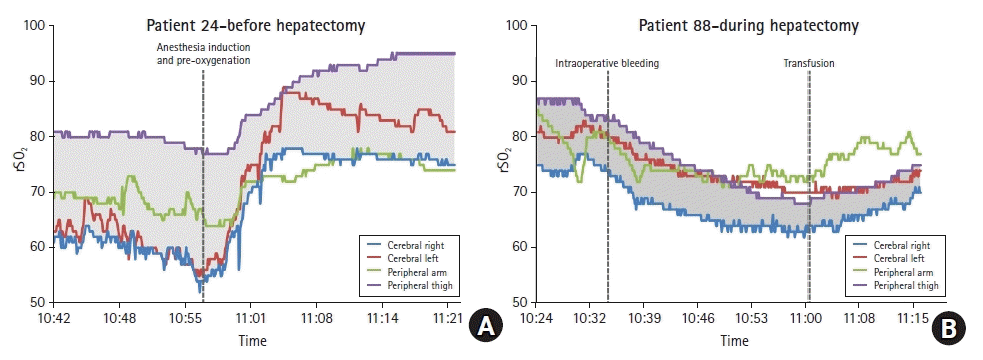
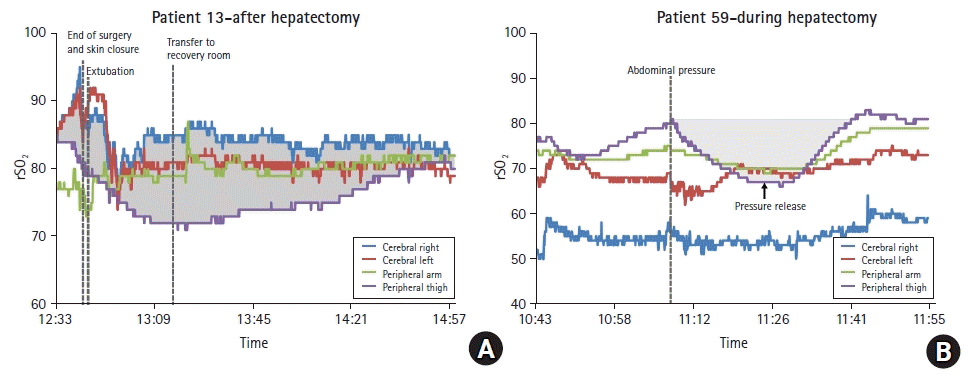
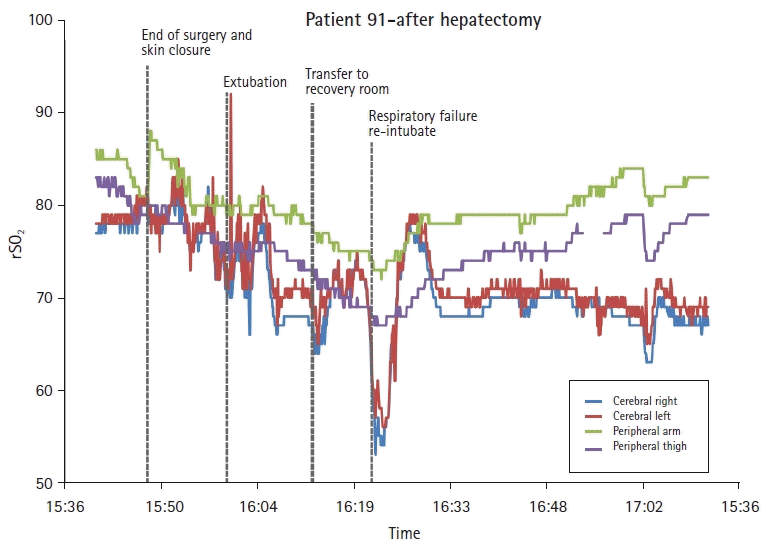
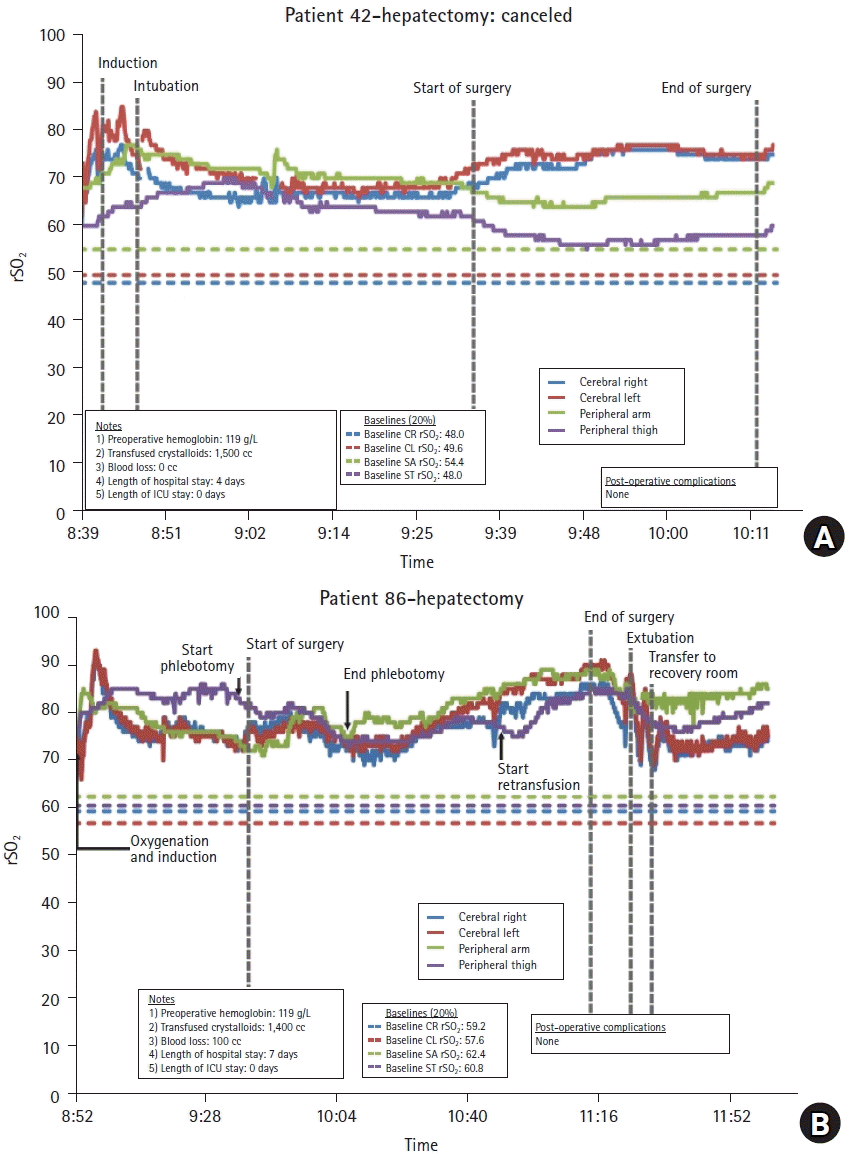
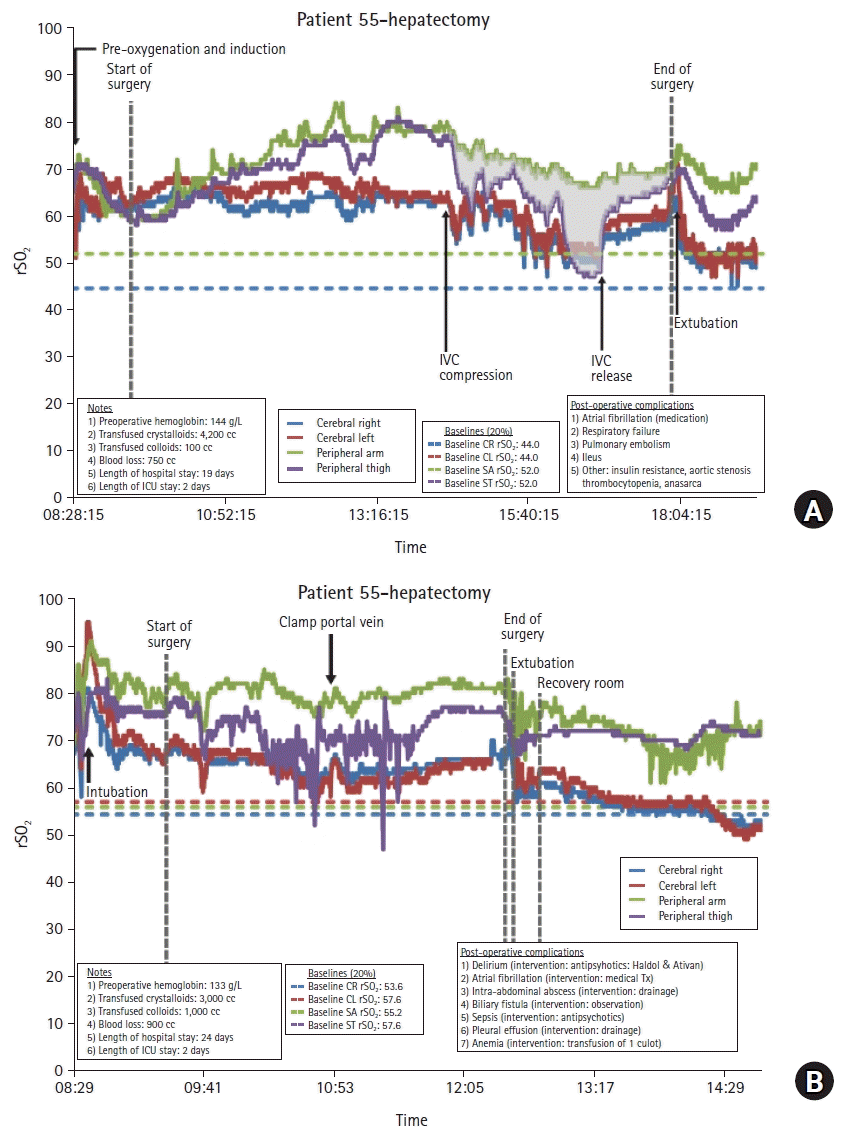




 PDF
PDF Citation
Citation Print
Print



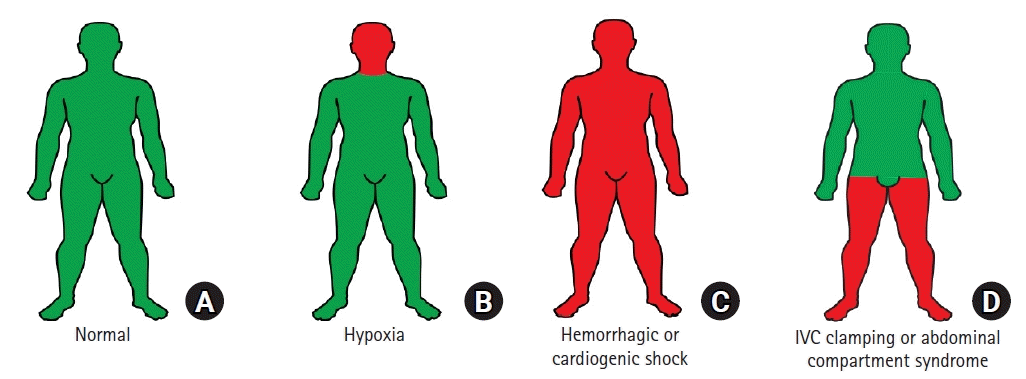
 XML Download
XML Download